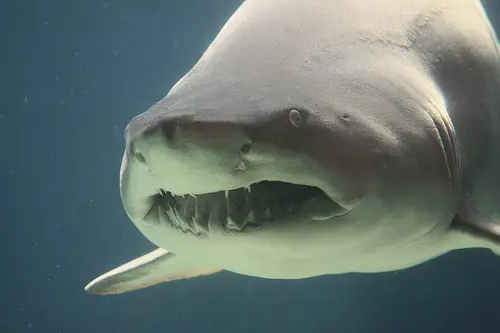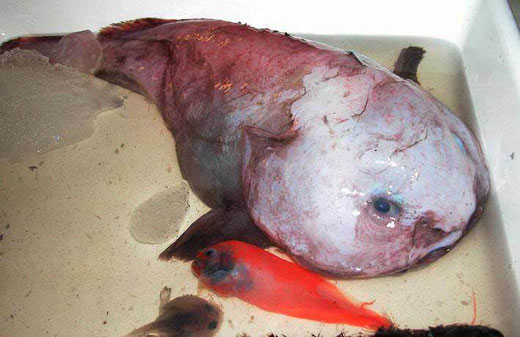Longfin Mako Shark
Unlike its Shortfin Mako Shark relative, the Longfin Mako Shark actually an uncommon species that is part of the mackerel shark group. This shark species has been around since the ancient times, as the Longfin Mako Shark’s fossilized teeth have actually been discovered from Hamilton, Australia and Gifu Prefecture, Japan. Both of these fossilized deposits date back to the Middle Miocene epoch (15.97 ± 0.05 Ma to 11.608 ± 0.005 Ma (million years ago).
It is the second largest species in its family after the Great White Shark, and is longer than the Shortfin Mako Shark. It can have a length of up to 8.2 ft (2.5m) and weigh over 150lb (70kg). What is unusual is that the female sharks are longer than the males. The differences between a shortfin and longfin mako is that the longfin mako is longer and has a slimmer build. It also has broad pectoral fins which suggests that it is a less active and slower swimmer than the shortfin mako shark.
The records of the worldwide distribution of the Longfin Mako Shark is difficult to determine as it is often confused with the Shortfin Mako Shark. However, its known habitats include the US Gulf Stream, southern California Cuba, Southern Brazil, Iberian Peninsula, Ghana, Mozambique Channel, Taiwan, Japan, northeastern Australia, northeast Micronesia. It is also thought to be found at Cape Verde and the Mediterranean Sea.
These sharks are predatory, and feed on squid and schools of bony fish. Interestingly enough, its large eyes are attracted to chemical lights (cyalume sticks), meaning it huts with its eyes. Although it is a predator, it is categorized by the International Union for Conservation of Nature as being a vulnerable species. This is because it is a rare breed with a low reproductive rate and has a continuing by-catch mortality. The reproductive rate is so low that its litter size is usually 2 but can range up to 8 baby sharks.
Fortunately for the Longfin Mako Shark, it actually is not sought after by Fishermen due to its low commercial value. This is because its fins and shark meat are actually of lower quality than other sharks. This shark is actually determined as worthless on the North American fish market, and only occasionally enters the Tokyo fish markets.
As a result, there are no records of the Longfin Mako Shark having ever attacked a human being. It also helps that it hardly is seen underwater. However, if you ever encounter a live one, be wary because it still is a really large predator that has sharp teeth which may bite you.




That is sooooooooo cool! I never know that ! I am glad that it is not hunted by fisherman! But sad that they reproduce so slowly.
Wow this is a great resource.. I’m enjoying it.. good article
Thanks Shelby and cna training, I’m glad you both enjoyed the article.
Yes, it is sad that they reproduce so slowly but at least they are left alone by Fishermen! :D
Unfortunately the photo is of a grey nurse, not a mako.
Cheers.
Thanks for letting me know, Jasen. However, the Photographer who took this photograph says it’s a Mako shark…
The interesting article on Isurus paucus (Guitart Manday, 1966), is spoiled by having a mislabeled image. The image labelled as “The Mako Shark” is not a mako at all. It’s more than likely an image of a grey nurse shark (Australia), spotted ragged-tooth shark (Africa) or sand tiger shark (US and UK), Carcharias taurus (Rafinesque 1810).
The mako shark is a pelagic animal that relies of its keen eyesight to find food and has large laterally positioned eyes as one of its key anatomical features. The animal depicted in the image has a small eye that is positioned well forward on a blunt snout. The ragged, protruding teeth are also one of the key anatomical features of Carcharias taurus. While the teeth, snout and eye are reliable indications that the fish in the image is incorrectly labeled, the sheer bulk of the depicted animal is indicative of C taurus.
Despite what your photographer has told you, it may be worthwhile having the image checked by a reliable source.